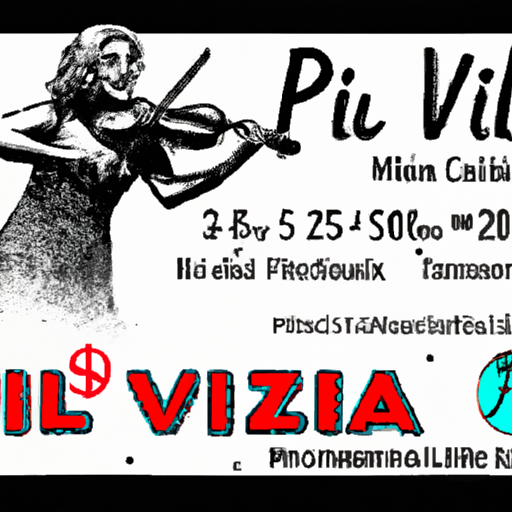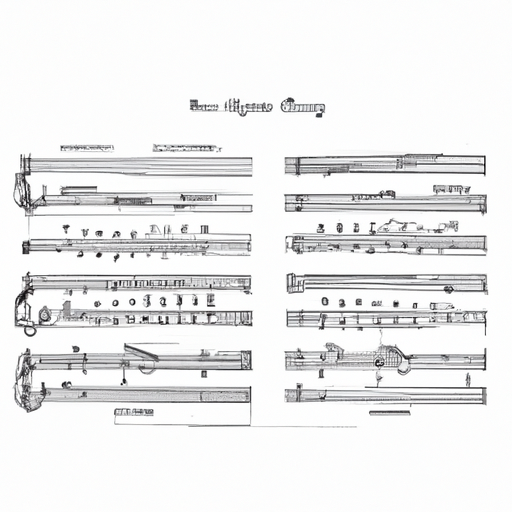
In the world of music, sheet music is a universal language that allows musicians to communicate and perform together. For violin players, being able to read sheet music is an essential skill that opens up a world of opportunities. Whether you're a beginner or an experienced violinist looking to improve your skills, this guide will provide you with the knowledge and tools you need to read sheet music with confidence.

A. Definition of sheet music: Sheet music is a written or printed document that contains musical notation. It is used by musicians to interpret and perform a piece of music.

B. Importance of reading sheet music: Reading sheet music is crucial for violin players as it allows them to accurately reproduce the composer's intended notes, rhythms, and dynamics. It also enables musicians to play in ensembles or orchestras, where everyone needs to be on the same page.
C. Overview of the guide: This guide will take you through the fundamentals of reading sheet music for violin players. We will cover topics such as understanding the staff, notes, rests, time signatures, key signatures, dynamics and articulations, reading music notation, tips for learning sheet music, and more.
A. Definition of staff: The staff is a set of five horizontal lines and four spaces that represent different pitches in music. It serves as the foundation for reading sheet music.
B. Lines and spaces: The lines and spaces on the staff correspond to different notes on the violin. The lines, from bottom to top, represent the notes E, G, B, D, and F, while the spaces represent the notes F, A, C, and E.
C. Clefs: Clefs are symbols placed at the beginning of the staff to indicate the pitch range of the notes. The treble clef is the most commonly used clef for violin players, indicating that the notes are in the higher range.
A. Definition of a note: A note is a symbol that represents a specific pitch and duration. It tells the musician what to play and for how long.
B. Types of note values: Note values indicate the duration of a note. Common note values include whole notes, half notes, quarter notes, eighth notes, and sixteenth notes. Each note value has a specific shape and duration.
C. Note placement on the staff: Notes are placed on the lines and spaces of the staff to indicate their pitch. The position of the note on the staff determines the pitch it represents.
A. Definition of a rest: A rest is a symbol that represents a period of silence in music. It indicates when to not play.
B. Types of rest values: Rest values correspond to the note values and indicate the duration of silence. Common rest values include whole rests, half rests, quarter rests, eighth rests, and sixteenth rests.
C. Rest placement on the staff: Rests are placed on the lines and spaces of the staff just like notes, but they have their own set of positions and shapes.
A. Definition of time signature: A time signature is a symbol placed at the beginning of a piece of sheet music to indicate the meter or time signature of the music.
B. Types of time signatures: Time signatures consist of two numbers stacked vertically. The top number represents the number of beats in each measure, while the bottom number represents the note value that receives one beat.
C. Placement of time signature on the staff: The time signature is typically placed at the beginning of the staff, above the clef. It provides important information about the rhythm and timing of the music.
A. Definition of key signature: A key signature is a set of sharp or flat symbols placed at the beginning of a piece of sheet music to indicate the key of the music.
B. Types of key signatures: Key signatures can be major or minor and indicate which notes are sharp or flat throughout the piece. They are represented by specific patterns of sharps or flats.
C. Placement of key signature on the staff: The key signature is typically placed after the time signature and before the first measure of music. It provides important information about the tonality of the piece.
A. Definition of dynamics and articulations: Dynamics and articulations are symbols that indicate the volume, intensity, and expression of the music. They provide guidance on how to play each note or phrase.
B. Types of dynamics and articulations: Dynamics include symbols such as piano (soft), forte (loud), and mezzo piano (medium soft), while articulations include symbols such as staccato (short and detached) and legato (smooth and connected).
C. Placement of dynamics and articulations on the staff: Dynamics and articulations are placed above or below the note or phrase they apply to. They help convey the intended interpretation and emotion of the music.
A. Putting it all together: Reading sheet music involves combining all the elements we've discussed so far – staff, notes, rests, time signatures, key signatures, dynamics, and articulations. By understanding each component and how they interact, you can interpret and perform a piece of music accurately.
B. Strategies for reading sheet music: Develop a systematic approach to reading sheet music by breaking it down into smaller sections, practicing sight-reading exercises, and familiarizing yourself with common patterns and musical phrases.
C. Practice exercises: Regularly practice reading sheet music by playing simple melodies, sight-reading exercises, or working through violin method books. The more you practice, the more comfortable and confident you will become.
A. Importance of practice: Consistent practice is key to improving your sheet music reading skills. Set aside dedicated practice time and gradually increase the difficulty of the music you work on.
B. Benefits of memorization: Memorizing pieces of music can enhance your ability to read sheet music. When you memorize a piece, you can focus more on expression and interpretation, rather than solely relying on reading the notes.
C. Resources for learning sheet music: Utilize resources such as sheet music websites, instructional books, and online tutorials to enhance your learning. Joining a music community or taking lessons from a qualified teacher can also provide valuable guidance and support.
A. Recap of the guide: In this guide, we covered the fundamentals of reading sheet music for violin players. We explored the staff, notes, rests, time signatures, key signatures, dynamics and articulations, reading music notation, and provided tips for learning sheet music.
B. Encouragement to continue learning: Learning to read sheet music is an ongoing process. The more you practice and engage with sheet music, the more proficient you will become. Stay committed to your musical journey and embrace the joy of playing the violin.
C. Final thoughts: Reading sheet music opens up a world of possibilities for violin players. It allows you to explore a vast repertoire, collaborate with other musicians, and express yourself through music. Embrace the challenge, enjoy the process, and let the sheet music guide you on your musical adventure.
For more information on sheet music and violin resources, visit https://bannhacflamenco.net/cho-thue-ban-nhac/luom-lat-tin-do-day/.